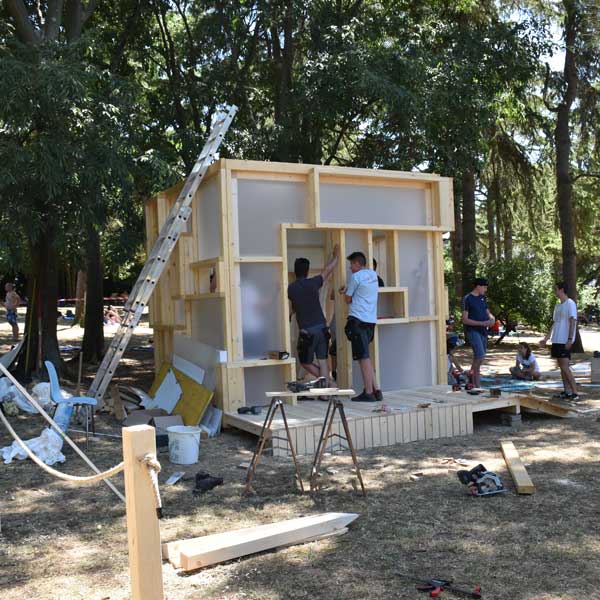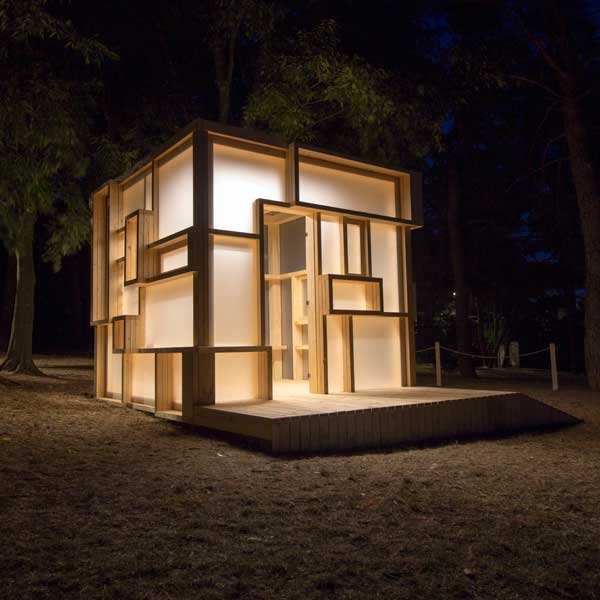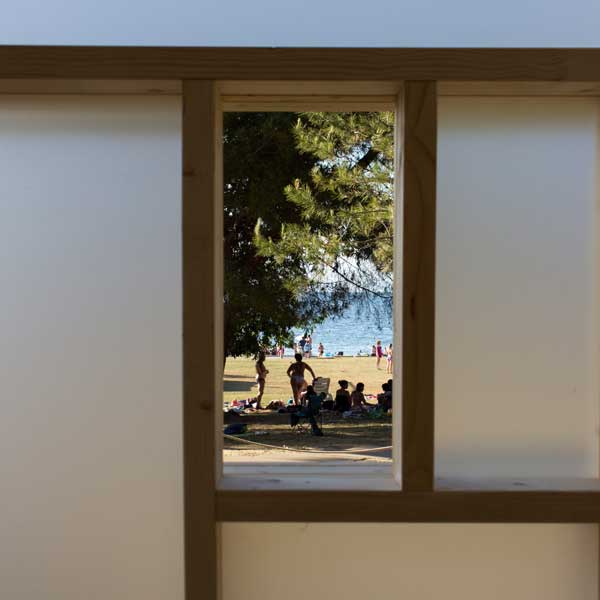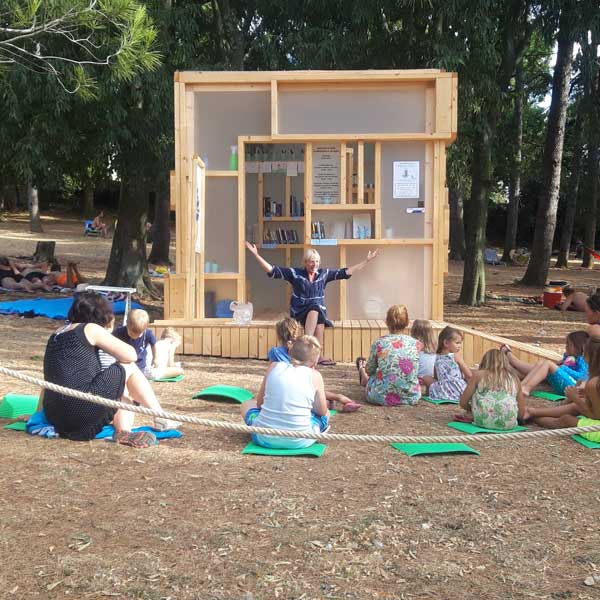Editorial
Alenka Fikfak: Read more ...
Editor-in-charge / UL FAThe new issue of the journal Igra ustvarjalnosti (Creativity Game) is here. The challenges we face in a journal of this kind are numerous. First, who is the magazine aimed at and which readers are we addressing? In the light of diverse and growing numbers of journals of scientific excellence, we ask ourselves where the next few years will take us. Will it become a purely scientific research journal focused on publishing outstanding research results, or will it manage to maintain a balance between learnedness and practical challenges, research by use cases, the search for creativity in research? Moreover, all things considered, how has home-based work during the COVID-19 pandemic affected this? These were the questions and challenges of 2021, a year in which our way of work was primarily bound to Zoom and similar environments. That made the work easier for many, but was the interdisciplinarity of thinking about the development of space still maintained? In previous issues, a lot of content has been devoted to presentations of student workshops. In the introduction of this issue, however, only one workshop is presented. A workshop that allowed many of those involved to get in touch with principles that we explore on a daily basis in our teaching and research work: the integration between disciplines, involvement of local populations, creativity of implementation and field-testing, etc. – the Europe Readr workshop, which took place all over the world in support of the Slovenian Presidency of the Council of the European Union.
In Slovenia, the University of Ljubljana and its partners prepared the functional art installation “My Reading Room” at the Izola lighthouse, which has served (and will serve in 2022) as a public reading room. The Europe Readr installation was put in place in an open space in Izola in the park next to the lighthouse and in the shade of pine trees. As a practical workshop with the added experience of participatory approaches, it involved the local community. It was carried out as part of the Europe Readr digital platform during the Slovenian Presidency of the Council of the European Union and aimed to bring the current social issues closer to readers of all generations around the world – in particular, to encourage reflection on the kind of world we want to live in.
The Europe Readr project was accompanied by a number of events around the world, all of which have contributed to promoting the creation of public reading spaces and the intergenerational exchange of ideas. The idea of a spatial art installation in Izola follows the concept of a library under the canopy, as open libraries under trees and in courtyards and parks are becoming a part of the summer urban infrastructure and thus a meeting point for users of different generations. The installation was carried out in the framework of a student workshop and planned from the outset in a participatory process as »learning by doing«. Among the students and all the other actors involved, the very process of creating the installation has brought about new awareness of a quality of life that goes beyond consumption and consumerism. The aim of the project was to stimulate the need to read and to acquire knowledge among both young and older visitors of the reading room.
The idea of an open-air library is not new, but it has been increasingly recognised and present in our communities in recent years. In the case of the “My Reading Room” project, it is a tangible spatial installation – a library where users can linger, visit or just watch what is happening around them. The project is also implemented as a series of thematically targeted events that bring together a heterogeneous set of interested actors. The library itself encourages visitors and readers to think about current social issues and to reflect on their future through the selection of books available in the library. As part of the project, the students also published a special multilingual newspaper – Palindrom (Palindrome). As part of the Europe Readr project, the publication of the newspaper allowed the students to share their experience of reading the contributions of different generations of authors.
Marina Hrs (Director, Izola City Library) about the Europe Readr Izola project: The “My Reading Room” in the pine grove by the beach in Izola was visited by 7,176 young and adult visitors who borrowed 2,704 books between 7 July and 30 September 2021. Every day students read fairy tales in Slovenian and Italian to children. A total of 96 fairy tale sessions with a workshop were held. The fairy tales were selected from a treasure trove of folk tales, which were listened to by parents and grandparents, as well as children. In the framework of the Trees Tell Stories study circle, which takes place at Izola Library every Tuesday afternoon, a storyteller told fairy tales related to trees and the forest, raising awareness of the importance of trees as living beings important for the life of people and the planet, and for our future existence. On the occasion of World Languages Week, in the last week of September, the Municipality of Izola, the Italian National Community of Izola, the Centre for Culture, Sports and Events and Izola City Library took part in 28 EUNIC Reads events and meetings held in the framework of the French Institute together with partners at three locations in Izola: the Europe Readr art installation by the sea, the National Community of Izola in the Manzioli Palace and the Izola City Library.
Info about Europe Readr – art installation in Izola
Seminar: Fikfak_2021
Mentors:
University of Ljubljana, Faculty of Architecture: Prof. Alenka Fikfak, PhD, Assist. Janez Grom, Assist. Kristijan Lavtižar, Assist. Prof. David Koren, PhD, Jan Barič; external contributors: Marko Lazič, Aleš Švigelj;
University of Ljubljana, Faculty of Electrical Engineering: Prof. Grega Bizjak, PhD, Lanlan Wei, Assist. Prof. Matej Bernard Kobav, PhD;
University of Ljubljana, Biotechnical Faculty: Prof. Manja Kitek Kuzman, PhD;
University of Ljubljana, Faculty of Civil and Geodetic Engineering: Assist. Gašper Mrak, PhD;
Urban Planning Institute of the Republic of Slovenia: Assist. Prof. Matej Nikšič PhD;
Nova Gorica School Center, Learning Fabrication Laboratory: Uroš Polanc
Students:
Nina Beganovic, Leon Rus, Manca Gjura Godec, Liza Štandeker, Tisa Lozej, Tadej Gregorič, Lovro Pinter, Vladimir Tripković, Laura Fontana, Anže Lopatic, Matija Kunstelj, Alexander Simič, Gašper Luka Pevec, Jure Polanc, Jernej Malik, Blaž Parežnik, Kaja Žnidaršič, Mara Vogrinec, Korina Kuzmić, Katarina Končina, Tajda Hladnik, Lara Zalokar, Tilen Fikfak Peršak, Filip Živković
Information about Europe Readr:
https://europereadr.eu/
https://www.facebook.com/EuropeReadr
https://www.instagram.com/europereadr/
Information about Europe Readr Izola:
https://europereader.wixsite.com/website
Papers
Ljudmila Koprivec, Martina Zbašnik-Senegačnik, Živa Kristl:
Analysis of Survey Responses to the Window Views
 IU/CG, 9/2021, 14-23. https://doi.org/10.15292/IU-CG.2021.09.014-023
IU/CG, 9/2021, 14-23. https://doi.org/10.15292/IU-CG.2021.09.014-023
Kristjan Lavtižar:
Urban Planning, Public Health and Urban Climatology Through History
 IU/CG, 9/2021, 24-33. https://doi.org/10.15292/IU-CG.2021.09.024-033
IU/CG, 9/2021, 24-33. https://doi.org/10.15292/IU-CG.2021.09.024-033
Aleksander Vujović:
Comparison of Fulfillment of Public Interest in an Urban Space with the Examples of Kolizej in Ljubljana and Cineplexx Palace Complex in Vienna
 IU/CG, 9/2021, 34-47. https://doi.org/10.15292/IU-CG.2021.09.034-047
IU/CG, 9/2021, 34-47. https://doi.org/10.15292/IU-CG.2021.09.034-047
Bardha Meka, Armir Ferati:
Hospital Navigation: Spatial Configuration and Spatial Cognition in University Clinical Center of Kosovo in Prishtina
 IU/CG, 9/2021, 48-57. https://doi.org/10.15292/IU-CG.2021.09.048-057
IU/CG, 9/2021, 48-57. https://doi.org/10.15292/IU-CG.2021.09.048-057
Domen Kušar:
Rose Windows in Gothic Cathedrals: A Compositional Challenge for Church Builders
 IU/CG, 9/2021, 58-64. https://doi.org/10.15292/IU-CG.2021.09.058-064
IU/CG, 9/2021, 58-64. https://doi.org/10.15292/IU-CG.2021.09.058-064
FULL VOLUME
PDF (8.26M) DOI: 10.15292/IU-CG.2021.09



